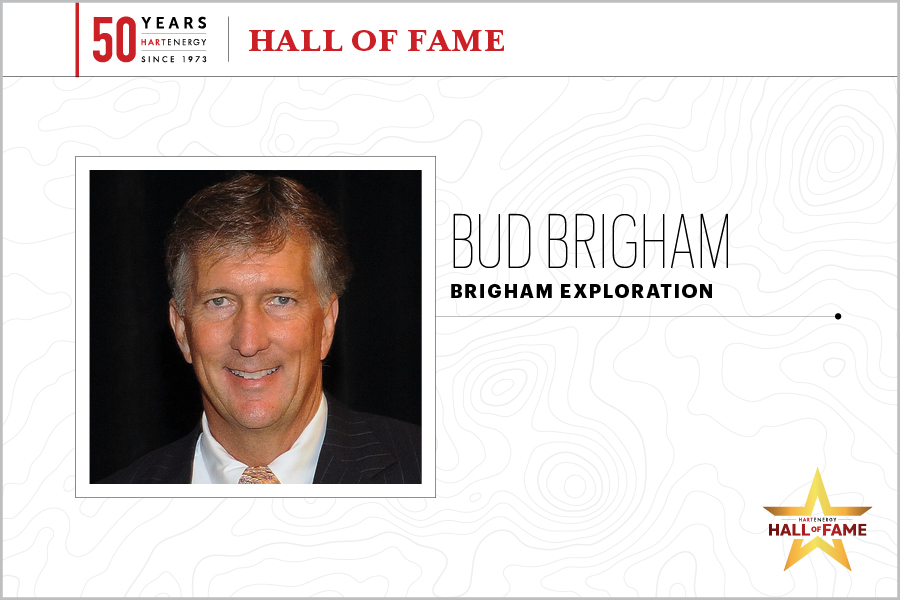Bud Brigham
Editor's note: This profile is part of Hart Energy's 50th anniversary Hall of Fame series honoring industry pioneers of the past 50 years and the Agents of Change (ACEs) who are leading the energy sector into the future.

Bud Brigham’s small-cap Brigham Exploration, the company he founded with wife Anne, had been wildcatting on the Gulf Coast using 3-D technology since 1990. In 2005, the company’s success rate was 92%. But conventional-trap “bright spot” chasing was a treadmill. Unconventional resource plays captured his attention.
The stimulated horizontal Bakken play was well proven in Montana by then. Leasehold was available on the North Dakota side of the Williston Basin. Brigham took the company there, but the early wells were disappointing. One was making 30 barrels a day.
Brigham said in “The American Shales,” “We did them with single, uncontrolled fracs because that was the current technology and that’s what [Bakken play founder] Bobby Lyle and Lyco [Energy] had used successfully at Elm Coulee [in Montana].
“But Elm Coulee had more porosity and more permeability.”
Brigham gained an interest in EOG Resources’s enormous wells east of the Nesson anticline, including access to EOG’s recipe: It was using multi-stage fracturing—a “controlled” frac. Most of Brigham’s operated leasehold was west of the Nesson anticline in the basin’s center, where operators were still struggling for repeatable, commercial success.
In early 2008, Brigham Exploration reentered its Mrachek 15-22 1H in McKenzie County that had IPed only 80 barrels from a one-mile lateral. The company completed it in seven stages; the well came back on with 565 barrels.
In January 2009, it put 20 stages on Olson 10-15H’s 9,500-foot lateral—the most frac stages yet anywhere in North Dakota. It came on with 1,160 barrels.
It put 20 frac stages on another well for 1,310 barrels and 28 stages on two others for 1,810 barrels and 1,553 barrels.
The company went on to as many as 38 stages, which became known in industry as “frac’ing Brigham-style.”
Started with $25,000 and its stock trading at as little as $1 twice in its history—in 1999 and 2009—the company and its 375,000 net acres were purchased in 2011 by Statoil (now Equinor) for $36.50 a share in a deal totaling $4.7 billion.
In the tumult in January 1999, oil had collapsed to $11. “Our stock got hammered,” Brigham said. “All of a sudden, the banks were wanting us to pay down our debt and our stock price went down to as low as a dollar. A lot of people were questioning whether we would survive.
“It was a very difficult time. I worried a great deal.”
He and Anne had more obligations than when they started the company in 1990. They already had one child and, in November 1998, they had triplets.
“So I was going home from a very difficult day at the office to three babies. It was a challenge, but it was motivational as well. We managed to work our way through and I think, ultimately, it made us a stronger company.”
After selling Brigham Exploration, he went on to found Brigham Resources, putting together an 80,000-net-acre Delaware Basin asset that he sold in 2017 to Diamondback Energy for $2.55 billion.
He also founded Brigham Minerals, which merged into Sitio Royalties Corp.
Currently, his frac-sand company Atlas Energy Solutions is a top service firm in the Permian.
—Nissa Darbonne, Executive Editor-at-Large
